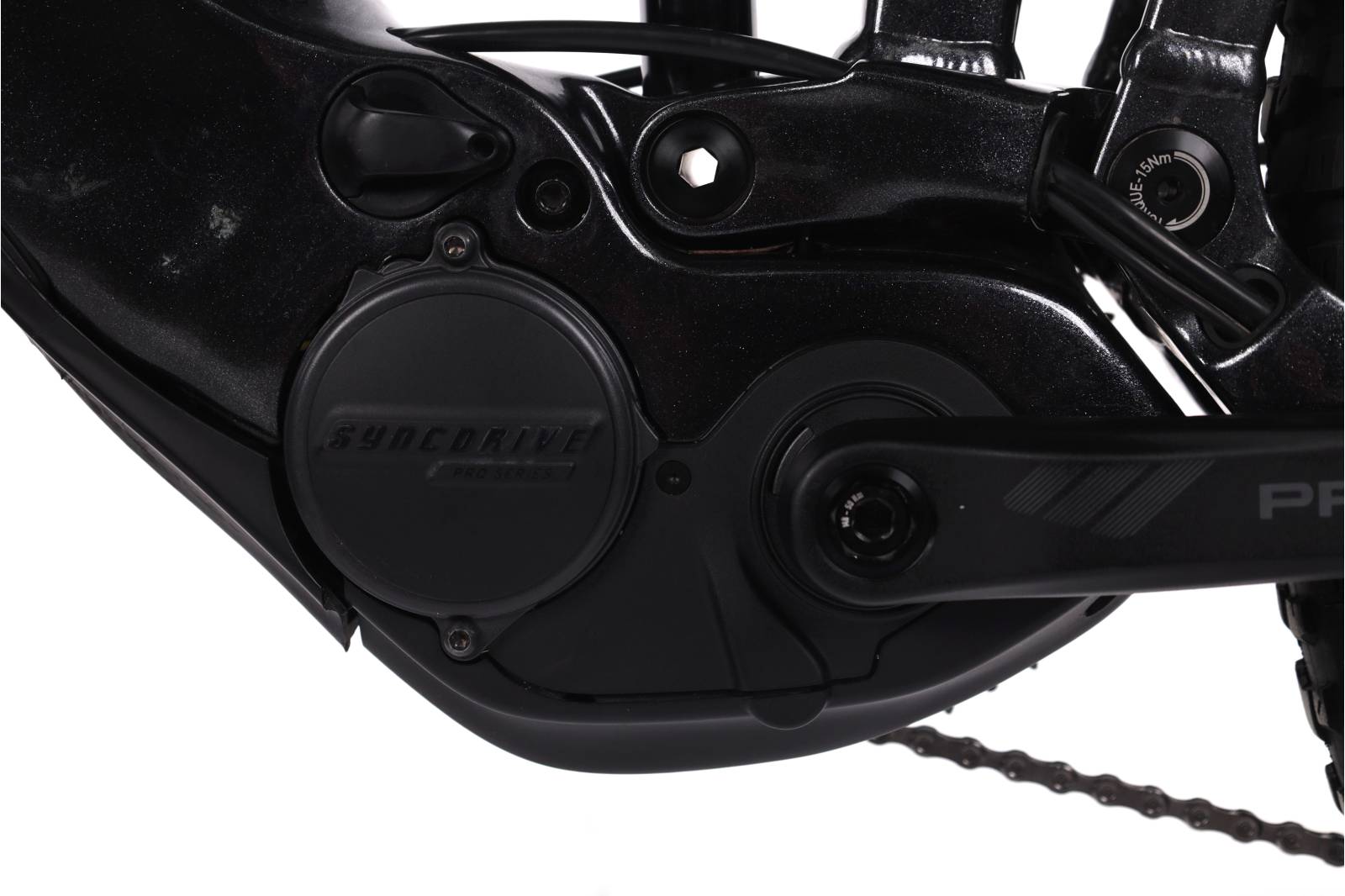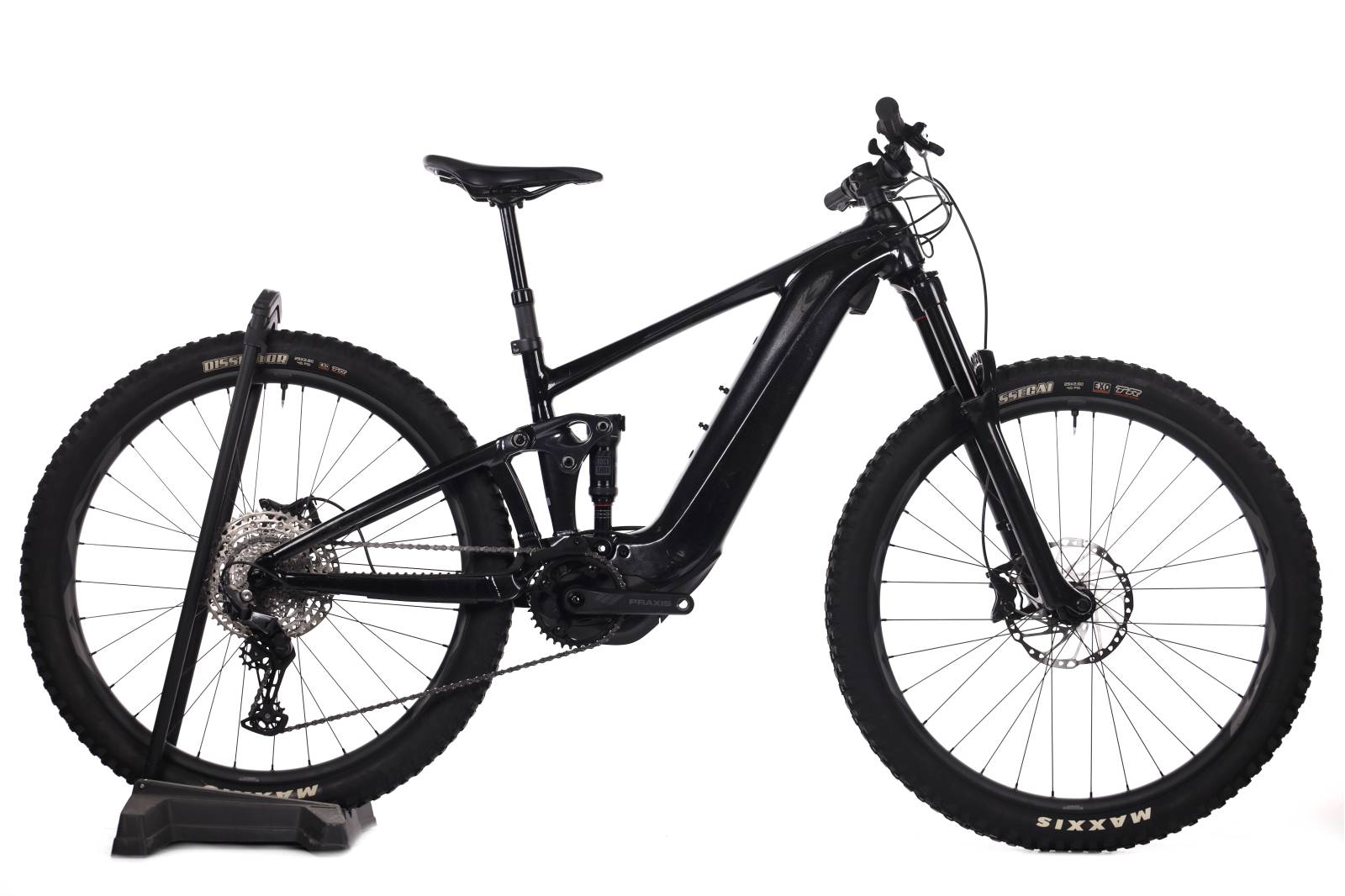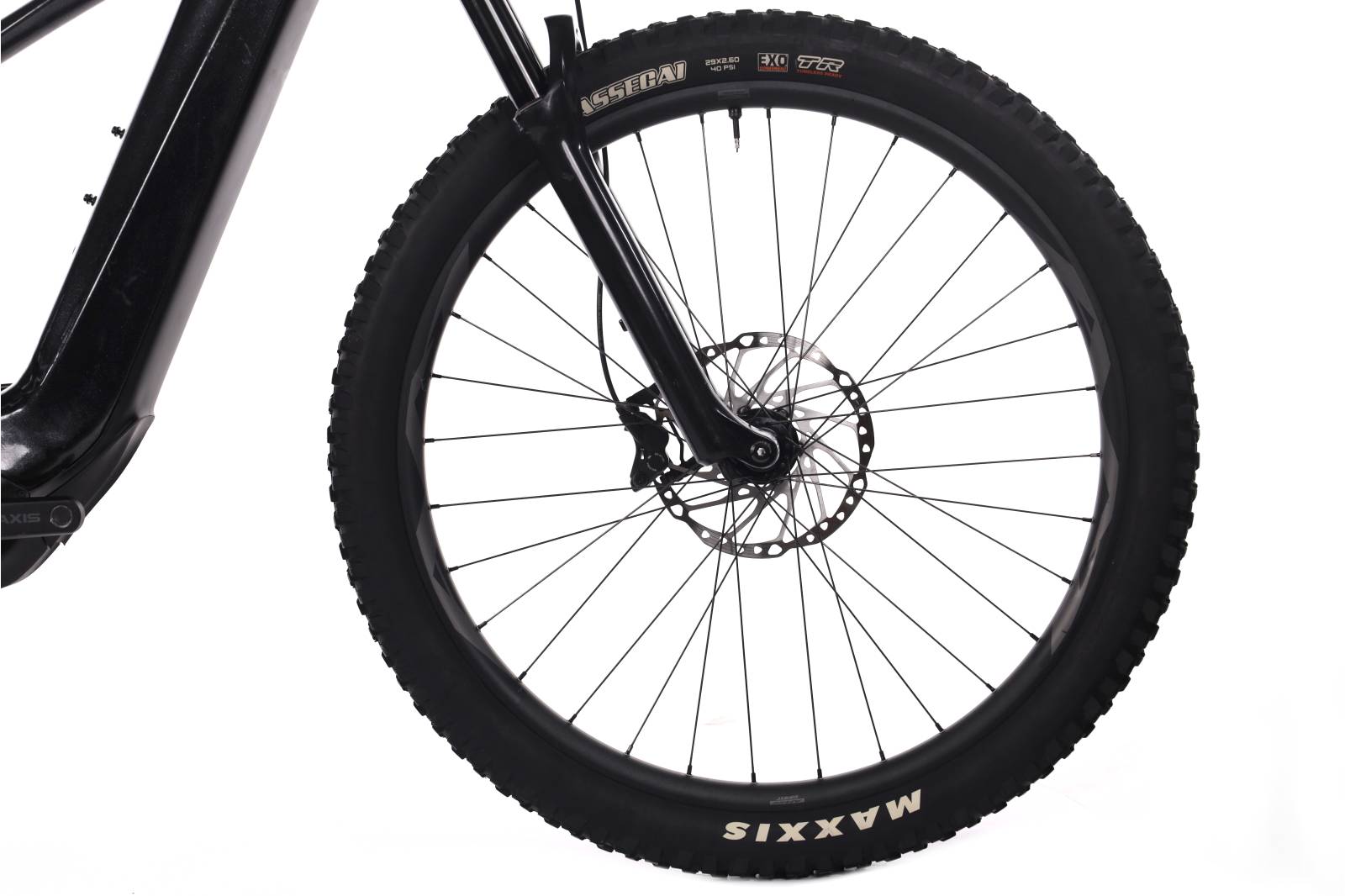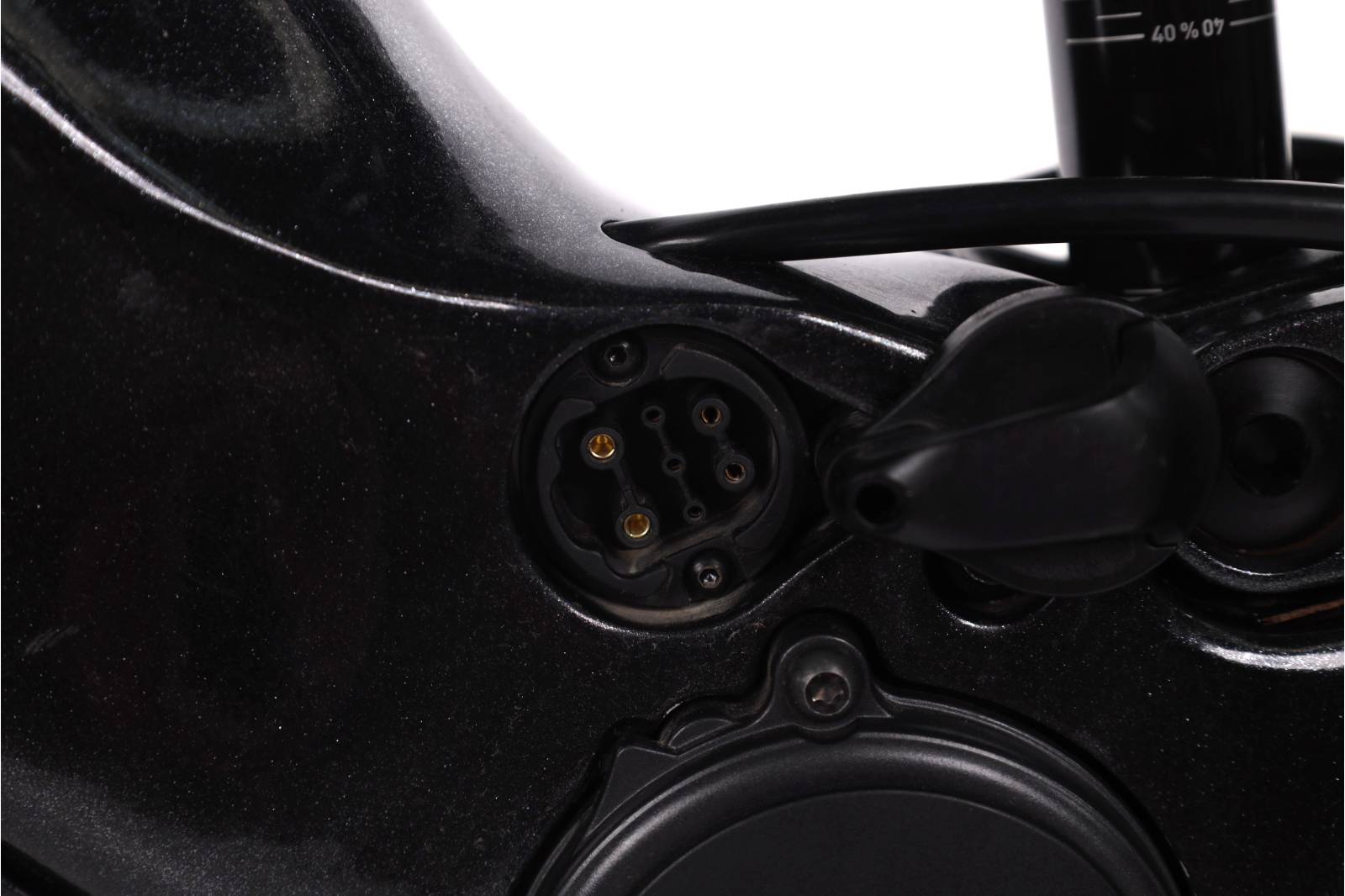Bei einem E-Bike oder Elektrofahrrad
ist die Reichweite ein entscheidender Faktor, um die Grenzen deiner Maschine und die Art der Strecken, die du bewältigen kannst, zu bestimmen. Hier sind einige Tipps, die dir helfen, die Akkuladung zu maximieren. Die Kapazität ist wichtig, aber viele weitere Faktoren spielen eine Rolle: die Mechanik, das Fahrverhalten des Radfahrers selbst und verschiedene äußere Einflüsse.
Faktoren, die die Reichweite eines E-Bikes beeinflussen
Im Folgenden einige Aspekte, die du zu deinem Vorteil nutzen kannst, um die Reichweite deines E-Bikes zu erhöhen:
Akkukapazität

Sie wird in Wh (Wattstunden) angegeben und gibt an, wie viel elektrische Energie der Akku über einen bestimmten Zeitraum produzieren und liefern kann. Derzeit findest du E-Bikes mit unterschiedlichen Akkukapazitäten, abhängig vom Modell. In der Regel reichen diese von 250 Wh (Stadt- oder Klapp-E-Bikes) bis zu 900 Wh (Langstrecken-E-MTBs).
Akkulebensdauer
Unabhängig von ihrer Kapazität verringert sich die Reichweite eines Akkus durch die Nutzung und die durchgeführten Ladezyklen. Je nach Modell halten sie zwischen 500 und 1.000 vollständige Ladezyklen aus. Doch nach drei oder vier Jahren kontinuierlicher Nutzung kann der Akku eines E-Bikes bis zu 30 % an Leistung verlieren.
Gewicht des Fahrrads

Das Gewicht des Fahrrads ist ein entscheidender Faktor für die Berechnung der Reichweite. Dieser Wert beeinflusst sowohl die Leistungsabgabe des Motors (ausgedrückt in Nm / Newtonmeter) als auch die Akkukapazität. Beide müssen an das Gesamtgewicht von Fahrrad und Fahrer angepasst werden. In den letzten Jahren hat das Aufkommen von leichten E-Bikes (unter 20 kg) dank eines besseren Verhältnisses zwischen Fahrradgewicht und Akkukapazität zu einer höheren Reichweite geführt.
Leichte E-Bikes optimieren ihre Reichweite durch ein besseres Verhältnis zwischen Fahrradgewicht und Akkukapazität.
Motortyp
Der Motor eines zugelassenen E-Bikes darf niemals mehr als 250 W leisten. Daher haben alle die gleiche Leistung. Sie unterscheiden sich darin, wie diese Leistung zur Unterstützung des Pedalierens im Anfangsmoment abgegeben wird (das sogenannte Drehmoment oder Torque). Diese Abgabe wird in Nm (Newtonmeter) ausgedrückt. Sie ist gesetzlich nicht begrenzt und beeinflusst ebenfalls die Reichweite des Fahrrads. Außerdem bestimmen die verschiedenen Unterstützungsmodi (unterschiedliche Leistungsabgaben) und deren Nutzungshäufigkeit auch die tatsächliche Reichweite.
Eine effiziente Nutzung und Einstellung der Unterstützungsmodi ist entscheidend, um die Reichweite nicht zu verschwenden.
Der Energieverbrauch beim Treten im Eco-Modus (mit begrenzter Leistungsabgabe von ca. 30 bis 50 %) ist nicht derselbe wie beim Treten im Modus superior (Boost oder Turbo, bei 100 %). Andererseits ermöglichen fortschrittlichere E-Bikes die Anpassung der Leistungsabgabe für jeden Modus über Software oder Apps spezifisch. Ein hoher Grad an Personalisierung, der es dir ermöglicht, den Energieverbrauch an deine Bedürfnisse anzupassen.
Reifenauswahl

Die Reifen beeinflussen eindeutig die Reichweite eines E-Bikes. Sie sind schließlich der Kontakt- und Reibungspunkt des Fahrzeugs mit dem Untergrund. Die größere oder kleinere Kontaktfläche wirkt sich auf einen höheren oder niedrigeren Energiebedarf der Batterie aus. Je breiter und größer die Stollen sind, desto höher ist der Energieverbrauch der Batterie, um die Reibung der Lauffläche auszugleichen.
Fahrergewicht
Das Gewicht des eigenen Körpers des Fahrers, zusammen mit seiner Ausrüstung und seinem Zubehör, ist ein Faktor, der die Reichweite eindeutig beeinflusst. Laut Angaben von Bosch, einem führenden Hersteller von Motoren für E-Bikes, bedeutet jedes Kilo weniger des Fahrers etwa 1 km mehr Reichweite.
Fahrstil

Auch die Nutzung des elektrischen Assistenzsystems durch den Biker beeinflusst die Reichweite. Es gibt diejenigen, denen eine Unterstützung in den sparsameren oder mittleren Modi ausreicht. Andere Fahrer benötigen einen zusätzlichen Schub, um die gleichen Hindernisse zu überwinden, was einen superior-Assistenzmodus erfordert. Wie bereits erwähnt, verbrauchen die Turbo-Modi mehr Energie und reduzieren die nominelle Reichweite erheblich.
Strecke/Geländeart
Die Steigung und die Beschaffenheit des Geländes (Asphalt, Erde, Schotter, Steine) sind Faktoren, die die Reichweite stark beeinflussen. Der Wechsel von einer flachen oder asphaltierten Strecke zu einer unwegsamen Strecke mit Erde oder Schotter (bei gleicher Distanz und gleichen Wetterbedingungen) kann zu einer Verringerung der Reichweite um etwa 15 bis 20 km führen.
Wetterbedingungen

Die tatsächliche Reichweite eines E-Bikes schwankt von Saison zu Saison aufgrund von Temperatur, Luftfeuchtigkeit usw. Im Winter hält sie tendenziell etwas weniger lang als im Sommer. Auch der Wind hat Einfluss, da er einen zusätzlichen Unterstützungsbedarf erfordert, um eine konstante Geschwindigkeit zu halten.
Tipps zur Erhaltung der Reichweite deines E-Bikes
Unter Berücksichtigung der beschriebenen Faktoren – obwohl noch weitere hinzugefügt werden könnten – kannst du einige Tricks anwenden, um Energie zu sparen und die Reichweite deines E-Bikes zu erhalten (oder sogar zu erhöhen). Das spart Energie, verlängert die Lebensdauer der Batterie und ermöglicht längere Touren. Wir teilen die wichtigsten Tipps mit dir.
Lade die Batterie nicht bis zum Maximum leer
Warte nicht, bis der Akku auf 0 % entladen ist, auch wenn er immer über eine Sicherheitsreserve verfügt, die verhindert, dass er vollständig leer wird. Lade ihn auch nicht länger als nötig auf und erreiche nicht die 100 %. Zwischen 80 und 100 % ist das Laden der Zellen aufwendiger, da sie vor möglichen Überladungen geschützt werden müssen. Ein effizienter Ladevorgang bewegt sich zwischen 20 % und 80 %. So verlängerst du die Lebensdauer des Akkus.
Warte eine Weile, bevor du den Akku lädst

Schließe das Ladegerät nicht direkt nach der Tour an. Die Ladezellen benötigen Zeit, um von der Entladephase in die Ladephase zu wechseln. Warte daher einige Stunden, damit sie abkühlen und sich an die Umgebungstemperatur im Ruhezustand anpassen können. Aber warte auch nicht bis zum nächsten Tag mit dem Laden, besonders wenn du fast die gesamte Energie verbraucht hast.
Überprüfe die Komponenten deines E-Bikes (Federung, Reifendruck, Kette usw.)
Vor jeder Fahrt, und wie bei jedem anderen Fahrrad auch, überprüfe wichtige Elemente wie die Federungen, den Reifendruck, die Kettenschmierung usw. Diese Komponenten beeinflussen den Verschleiß des Akkus. Passe die Gabel und den Dämpfer an den vom Hersteller empfohlenen Druck und an die Art der Strecke an, die du fahren willst. Halte die Kette sauber und gut geschmiert und pumpe die Reifen mit einer Manometerpumpe vor jeder Fahrt auf. Das sind kleine Details, die dir Dutzende Kilometer einsparen können.
Nimm die unbedingt notwendige Ausrüstung mit
Füge nicht mehr Zubehör, Kleidung oder Essen hinzu als unbedingt nötig. Es ist wichtig, gut mit Ersatzteilen und Werkzeugen ausgestattet zu sein, besonders wenn du in die Berge gehst. Aber du musst das Gleichgewicht finden, um kein zusätzliches Gewicht auf das Fahrrad zu bringen. In diesem Sinne empfehlen wir, ein kompaktes Multitool mitzunehmen, statt mehrere einzelne Schlüssel oder Kettennieter. Du kannst das Wasser auch in einem Trinkrucksack transportieren und auf Flaschen verzichten, um so eine bessere Gewichtsverteilung zu erreichen.
Verwende einen Akku-Extender
Viele E-Bikes sind auf neue Horizonte und lange Strecken ausgelegt. Es gibt immer mehr Modelle, die mit zusätzlichen tragbaren Akkus kompatibel sind und mehr Kapazität und Reichweite bieten. Wenn du gerne stundenlang mit deinem E-Bike unterwegs bist oder mehrtägige Touren machst, empfehlen wir den Kauf eines Extenders. Sie werden meist im Bereich des Flaschenhalters, am Sattelrohr usw. montiert. Er ist günstiger als ein Originalakku und kann problemlos in einem Rucksack oder einer Transporttasche mitgenommen werden.
Fahre effizient
Es ist nicht ratsam, das Assistenzsystem ständig am Limit zu fordern. Im Turbo-Modus als Standard zu fahren, den Walk-Modus zum Schieben deines Fahrrads beim Gehen zu missbrauchen, Drifts zu machen... All diese Aktionen werden die Batterie schnell entladen. Nutze die Unterstützungsmodi intelligent: Eco und Trail (30-70% Unterstützung) für flache Strecken, sanfte oder leicht technische Anstiege, und den Boost-Modus für besonders anspruchsvolle Momente (steile Anstiege, sehr steile Hänge usw.). Denk daran, dass dir dein E-Bike das Treten und den Verbrauch deiner eigenen Energie nicht abnimmt. Denk daran, dass wir von Fahrrädern mit Tretunterstützung sprechen, nicht von Mofas.
📺 Einfache Tipps. In diesem Video von Track MTB
gibt es einige Hinweise für effizientes Fahren mit E-Bikes und wie man die Reichweite verlängern kann.
Bleib fit und trainiere
Der Kauf eines E-Bikes kann uns zu dem Irrglauben verleiten, dass wir jede Strecke ohne Training bewältigen können. Das ist falsch. Schon zu Beginn das Maximum von deinem E-Mountainbike
zu verlangen, bedeutet, seine Reichweite zu verschwenden und die Lebensdauer der Batterie zu verkürzen. Deshalb können wir Energie sparen, indem wir selbst etwas mehr leisten. Wir empfehlen dir, regelmäßig mit deinem E-Bike unterwegs zu sein, effizient zu treten, auf deinen Körper zu achten, dich gut zu ernähren und zu hydratisieren und die Fahrtechnik in Passagen mit Hindernissen, Anstiegen usw. zu trainieren. Das ermöglicht ein besseres Fahrgefühl auf dem Bike und wirkt sich direkt positiv auf die Reichweite aus.
